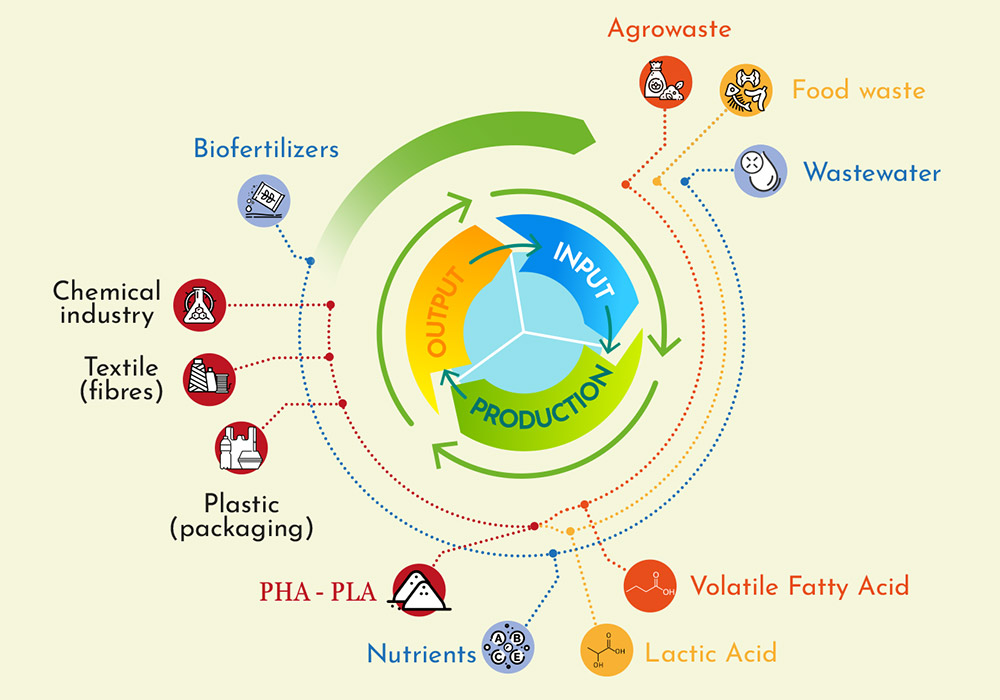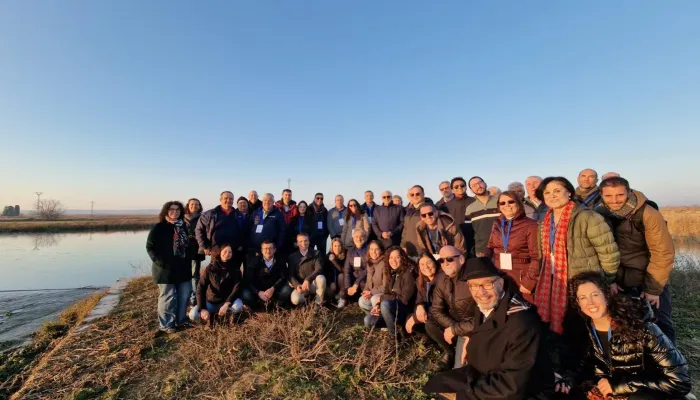Industrial Symbiosis: How to turn waste into opportunities and move towards an efficient circular economy

Industrial symbiosis as a driver of the circular economy
Industrial symbiosis is a key strategy to transform the way industries manage their natural resources. Its purpose is simple yet powerful: for the waste or by-products of one company to become raw material for another, generating economic savings and reducing environmental impact. This practice paves the way for a circular economy model in which resource use is maximized and waste minimized. The circular economy is not just a concept, but a necessity to ensure the sustainability of the industrial sector.
In this context, CIRCE works as a technology partner to help companies identify and activate these opportunities, fostering a more collaborative and efficient industrial ecosystem.
Industrial symbiosis represents a paradigm shift: moving from a linear model of extraction, use, and disposal to a circular one where natural resources are preserved, optimized, and shared.
Tangible benefits of industrial symbiosis for B2B industry
Industrial symbiosis offers direct advantages for companies:
- Reduction of raw material costs: Using by-products from other companies reduces the need to purchase virgin materials and, therefore, eases the pressure on natural resources.
- Energy savings: The exchange of energy or resources helps optimize consumption and improve energy efficiency.
- Lower carbon footprint: Emissions associated with the product life cycle are reduced.
European studies have identified that industrial symbiosis projects can reduce operating costs by more than 10% and decrease generated waste by 15-20%, depending on the industry. In addition, these practices are estimated to help extend the useful life of natural resources.
Challenges and barriers to implementation
Despite its benefits, industrial symbiosis faces obstacles:
- Technical barriers: Compatibility of waste or by-products and the need for adaptation processes.
- Lack of trust between companies: Sharing information about waste flows requires creating a collaborative environment.
- Need for tools and platforms: Digital solutions and methodologies are required to systematically identify synergy opportunities.
Overcoming these barriers is essential to make the circular economy a reality in the industrial environment.
SYMBA: a practical example of how to make it happen
The European research project SYMBA is a clear example of how to bring industrial symbiosis to life. SYMBA, led by CIRCE, aims to facilitate the identification and creation of synergies between companies for the exchange of by-products, energy, and services. It does this by developing:
- Digital platforms that connect companies with collaboration potential.
- Analysis methodologies that assess the technical and economic viability of synergies.
- Pilot cases that demonstrate the benefits of these industrial alliances.
SYMBA acts as a bridge between theory and practice, showing that industrial symbiosis is not only possible but also profitable and necessary for a more sustainable future based on natural resource preservation and the circular economy.
More information: SYMBA - CIRCE

The role of CIRCE as a technology partner for industrial symbiosis
Industrial symbiosis is one of the great opportunities for companies seeking to be competitive and sustainable. On this path, CIRCE positions itself as a key ally, providing technical knowledge, methodologies, and tools to turn theory into tangible results.
CIRCE supports companies in the design and implementation of industrial symbiosis solutions, facilitating their transition towards a circular model aligned with natural resource preservation.
Latest news






